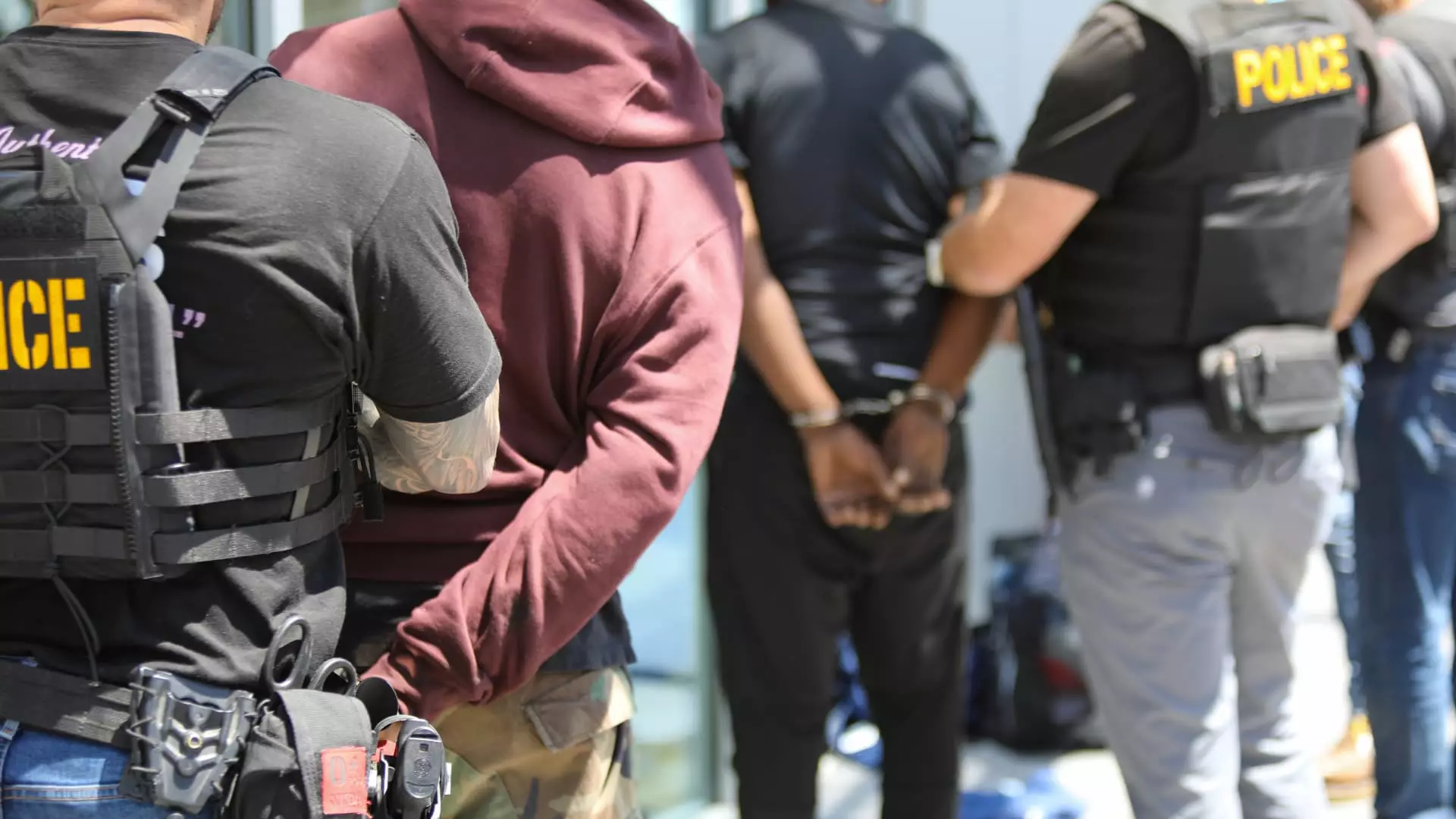In a remarkable yet alarming turn of events, law enforcement authorities have launched a nationwide offensive against organized retail crime, resulting in hundreds of arrests across 28 states in a bid to combat what has become a devastating trend. The recent blitz, orchestrated by the Cook County regional organized crime task force, included participation from over 100 jurisdictions and major retailers like Home Depot, Target, and Walgreens. This coordinated effort has sent ripples of concern through the retail sector, compelling both law enforcement and retailers to confront the escalating threat posed by organized theft operations.
Cook County Sheriff Tom Dart has been vocal about the perceived efficacy of the operation, asserting that focused efforts can deter criminal behavior. While Dart’s optimism is understandable, this sentiment raises questions: Is there truly enough being done, or is this merely a temporary bandage on a much larger issue? Organized retail crime, characterized by sophisticated networks of thieves systematically plundering stores, has seen a staggering rise in 2023, with incidents reportedly up 93% compared to 2019. This surge not only reflects a rising tide of brazen thefts but also highlights significant gaps in existing enforcement measures.
The Alarming Statistics Behind Retail Theft
The data speaks volumes about the escalating crisis; according to findings from the National Retail Federation, the dollar losses associated with shoplifting have increased by 90% over four years. As the figures mount, the underlying causes require deeper scrutiny. Critics argue that the current criminal justice framework does little to deter repeat offenders. Felony thresholds that effectively permit continuous theft are particularly troubling. Previously, the Cook County State’s Attorney’s Office was limited in its ability to prosecute retail theft felonies unless the value of stolen goods exceeded $1,000. The new approach under State’s Attorney Eileen O’Neill Burke is a step in the right direction, but whether it will yield substantive long-term change remains to be seen.
The increase in thefts raises an urgent call for reevaluation of laws affecting retail crime. When prosecutorial discretion allows for criminal behavior to persist unchallenged, it opens the floodgates for organized crime networks to flourish. O’Neill Burke’s shift in prosecutorial policy reflects a growing recognition that retail theft should be addressed with a seriousness equal to its impact on beleaguered retailers struggling to maintain profit margins in an increasingly competitive market.
Collaboration: The Cornerstone of Effective Action
The success of the recent operation partially hinges on collaboration between law enforcement and the retail sector. Companies like Ulta Beauty and Walgreens recognized the necessity of sharing intelligence and resources. Collaborative efforts are vital in bringing to light the intricate networks at play within organized retail crime. Dan Petrousek from Ulta Beauty aptly stated that collaboration is key to making a meaningful impact, emphasizing the need for a unified front against a problem that threatens the very foundation of retail business models.
However, one must ask: Is collaboration enough? Are retailers prepared to elevate their internal security measures beyond mere lip service? As losses from organized retail crime escalate, these companies must invest in not only an employment of better security technologies but also foster an organizational culture that prioritizes proactive measures over reactive ones. Going beyond collaboration demands an ongoing dialogue between retailers and law enforcement, ensuring that the insights gained from operations not only inform immediate actions but also guide long-term strategic planning.
Is Law Enforcement Equipped to Handle the Scale of the Problem?
The recent crackdown might suggest an organized and responsive approach to retail crime, but it raises a pivotal question about law enforcement’s ability to cope with the scale of the problem. As retail theft evolves in sophistication, growing increasingly embedded in organized operations, the resources required to address it must similarly evolve. This needs not only funding for law enforcement agencies but also legislation that reflects the realities of modern retail theft.
While retailers like Home Depot report an overall decrease in theft, they acknowledge a troubling uptick in organized theft incidents. Monitoring crime trends is essential, and legislative bodies must act swiftly to adapt laws to reflect the evolving tactics of these organized crime networks. It stands to reason that if the law is unable to keep pace with criminal innovation, the implications could be dire for both businesses and consumers alike.
The landscape of retail theft presents a complex dilemma—one that demands robust, proactive, and systematic solutions rather than sporadic responses. In light of rising incidents, a collective and long-term approach involving law enforcement, retail executives, and legislative reform is imperative. Without the commitment to re-evaluating strategies and enacting stronger laws, the battle against organized retail crime is likely to remain a relentless uphill struggle.

